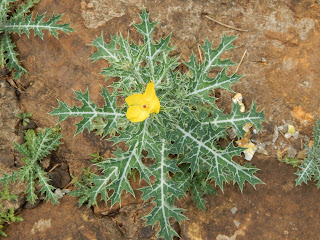Padma Mahanti
1.
Department of
Environment and Climate Change, Trivandrum-695024, Kerala
Email: padma.mahanti@gmail.com
Email: padma.mahanti@gmail.com
Abstract
The biodiversity
of brackish water (BW) is always showing the virginity in the exploration of
flora and fauna. BW is also the harbor of many medicinal plants, avifauna and
other taxa. Due to salinity, plants develop the defense mechanisms by
synthesizing some secondary metabolites which show the medicinal potential for
the human beings. During a weekend visit along the Neyaar River, we could
identify many beneficial indicators of rich biodiversity near Poovar beach. It
is a prime tourist destination near the capital of the state of Kerala. A cursory
observation revealed that the most prominent flora are Cerbera odollam, Barringtonia racemosa, Cocos nucifera etc and most
visible avifauna are Haliastur indus, Corvus
splendens, Bubulcus ibis, Ardeola grayii etc. It was also observed that the
place is a prime tourist destination of the Capital of said state and the
movement of the water boat have been disturbing the balance of the ecosystem.
The present study highlights the importance of the area as rich biodiversity
spot and recommends the needed action for the conservation of BW ecosystems.










